Kirigami 1.0
Matrix Architecture
A Project by Jenny Sabin Lab
Cornell University
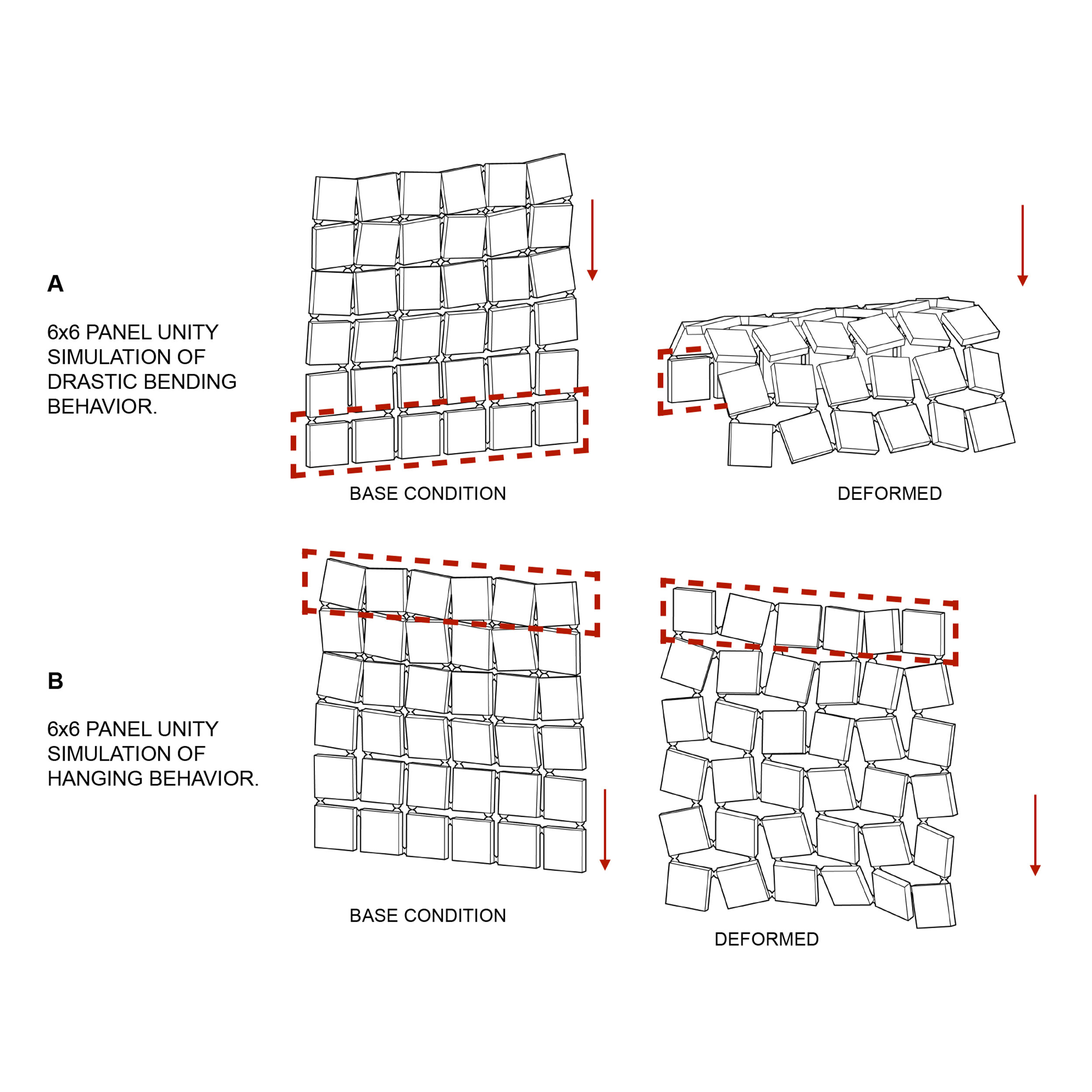
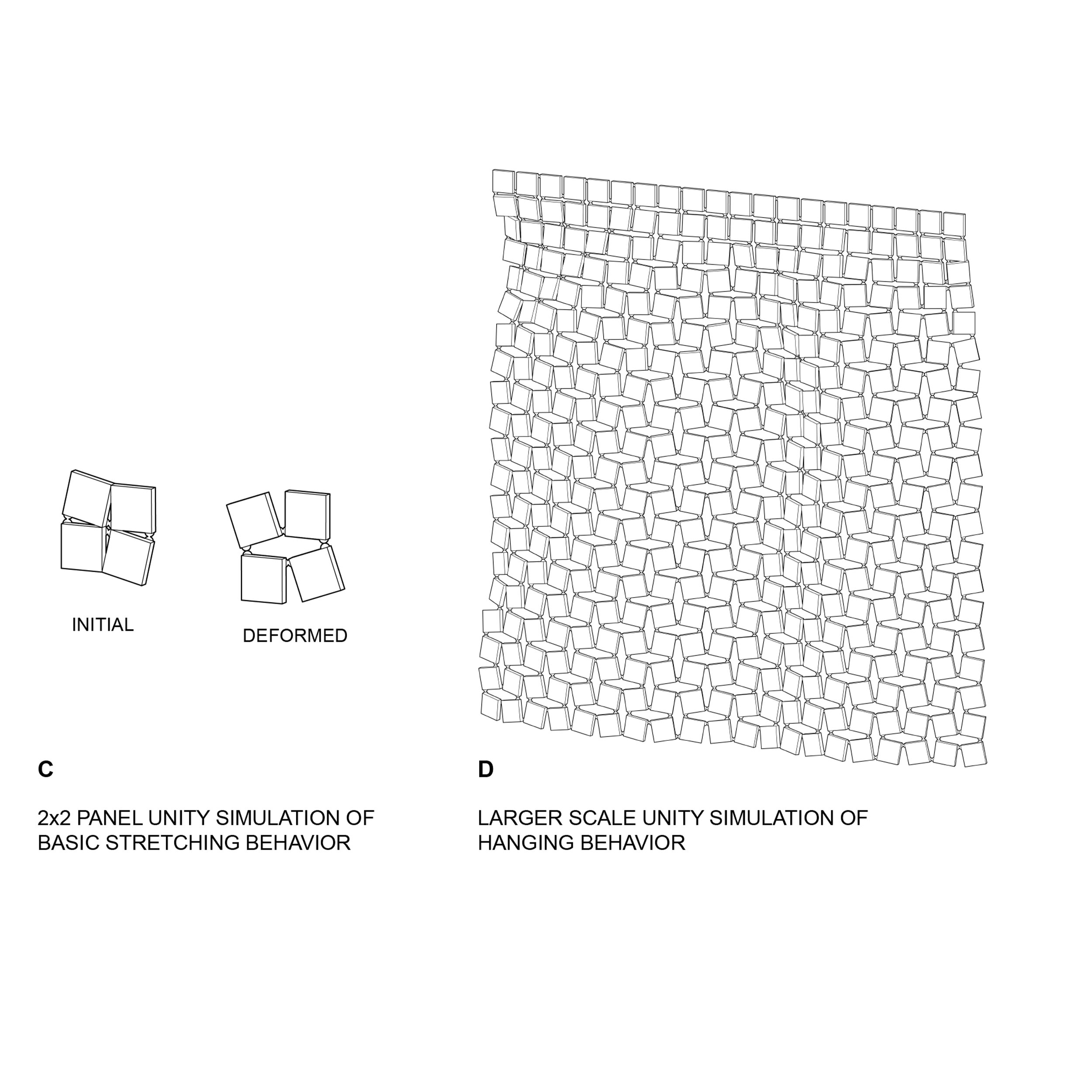
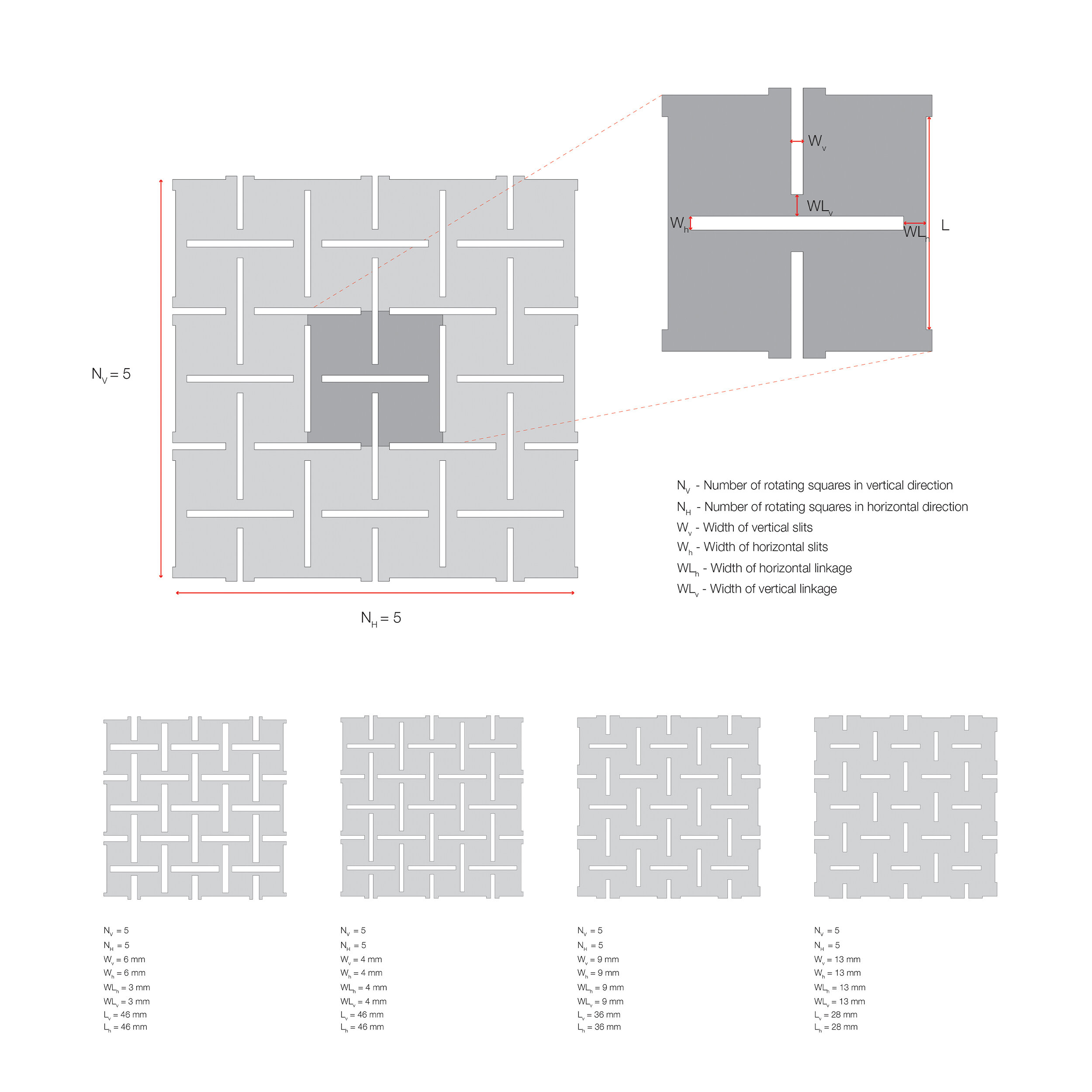
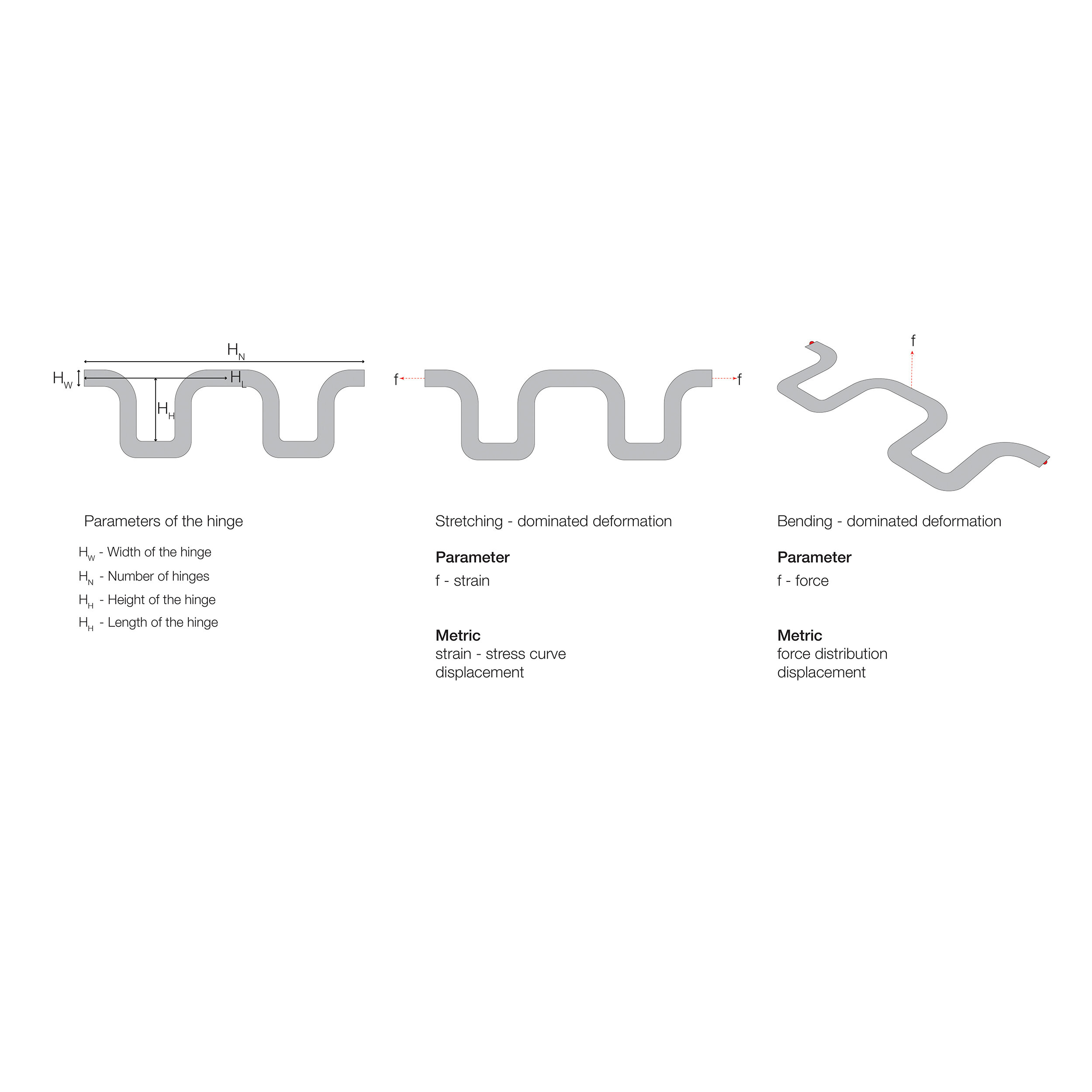
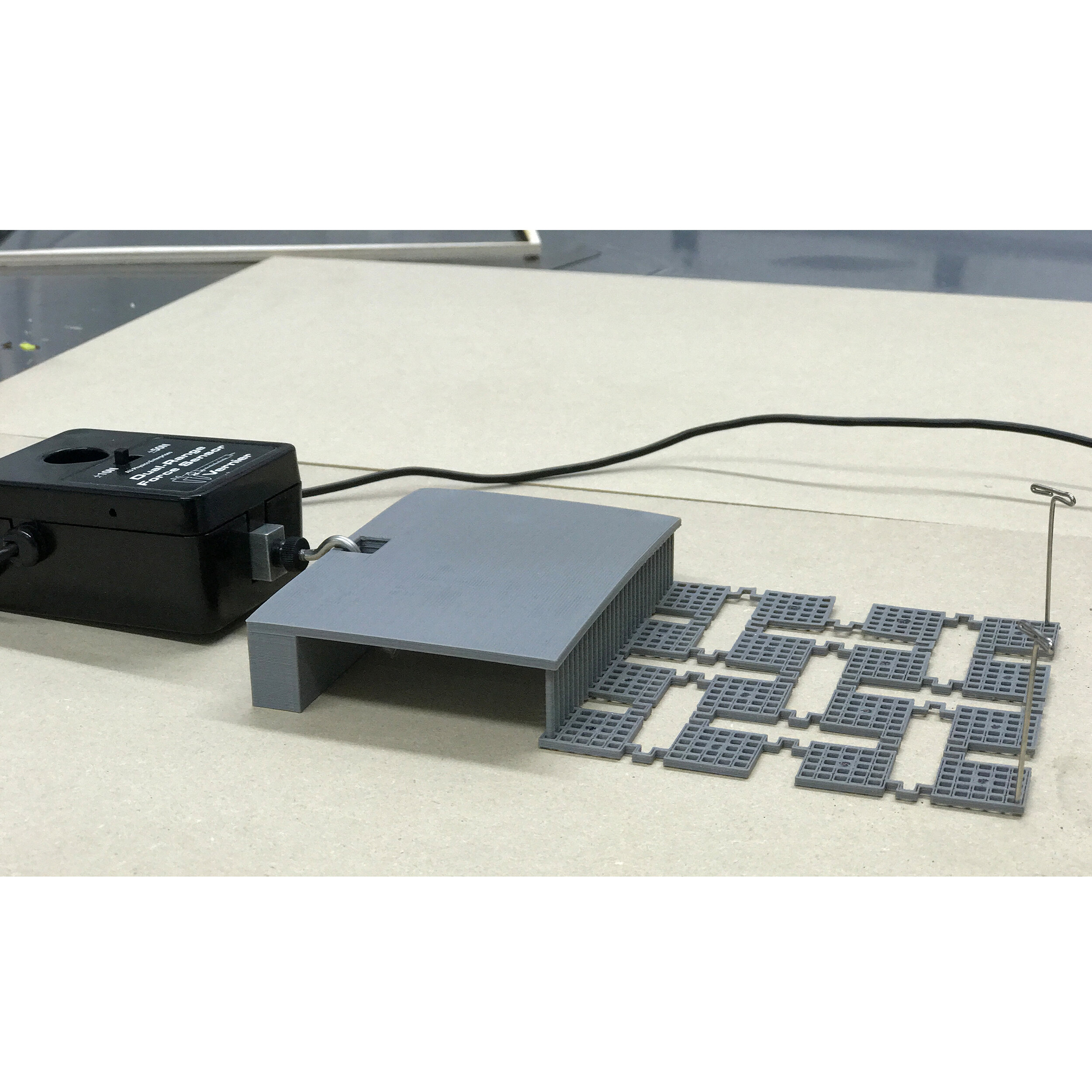
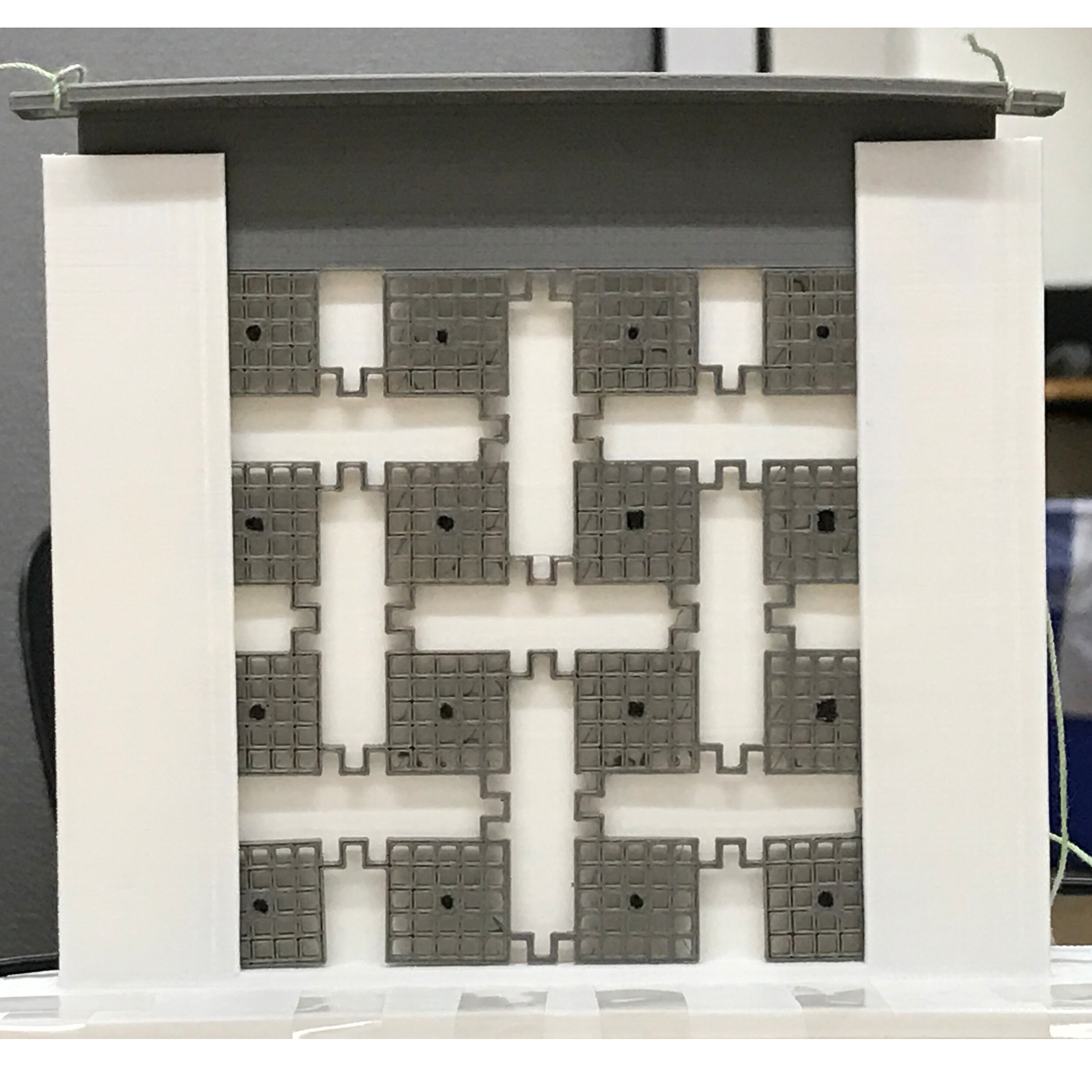
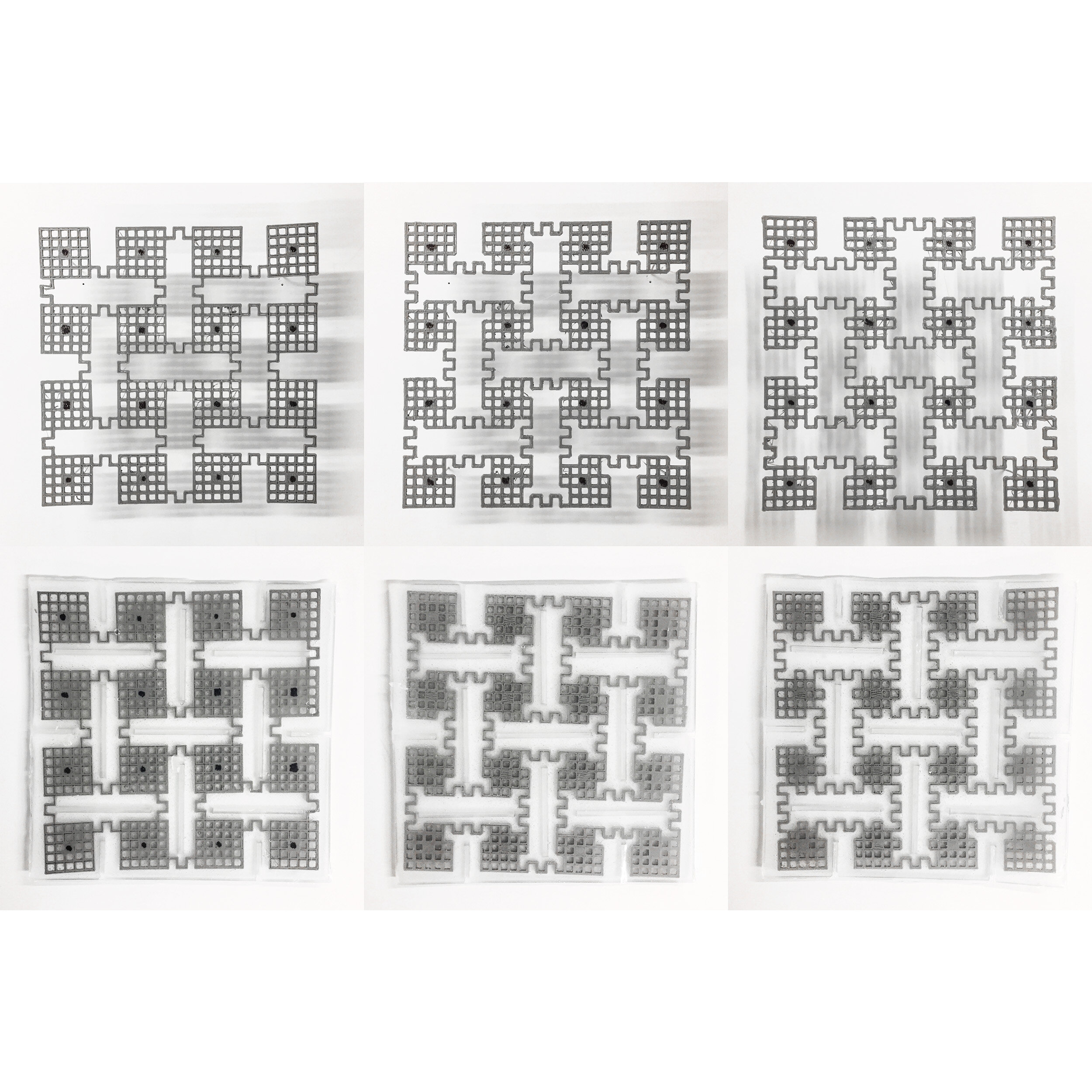
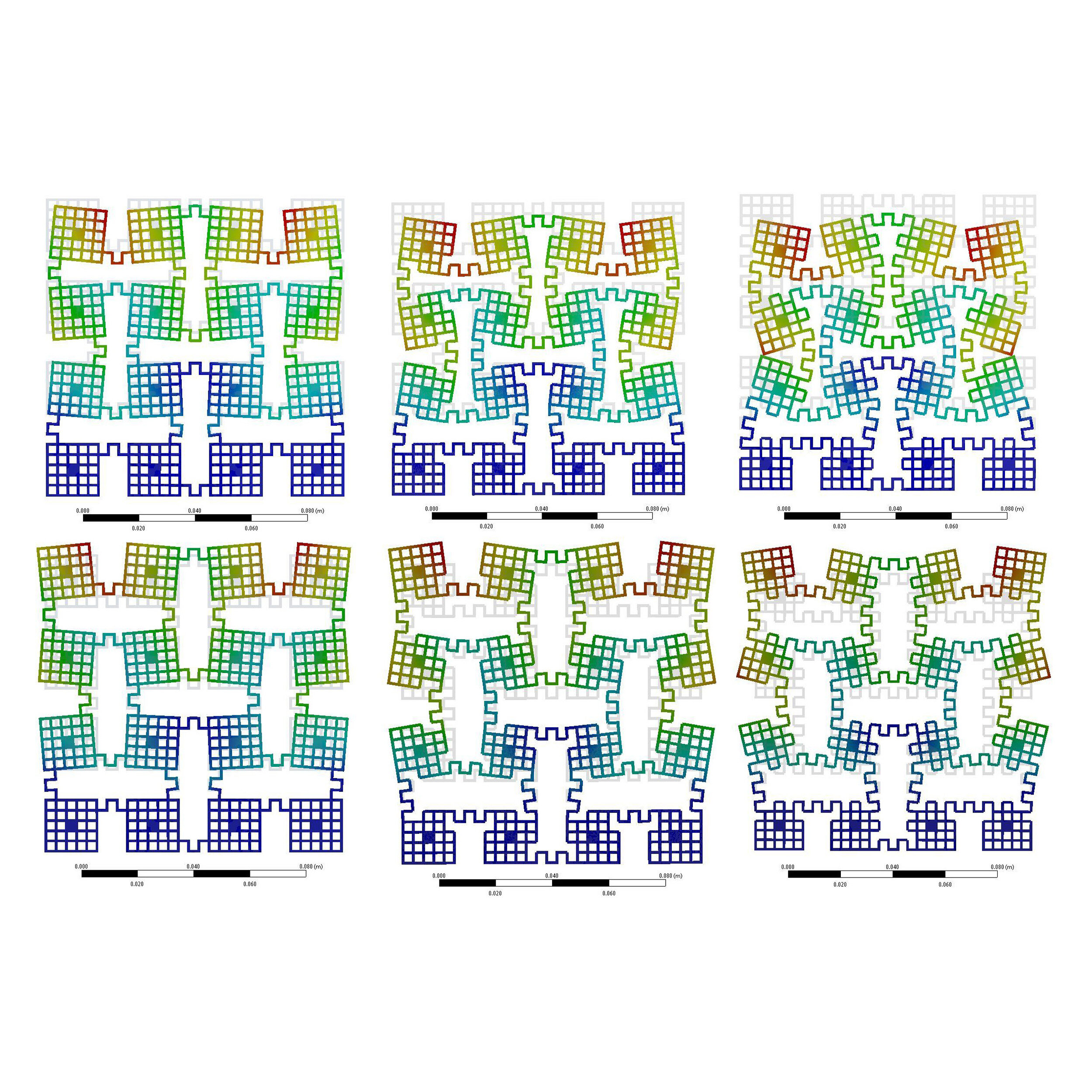
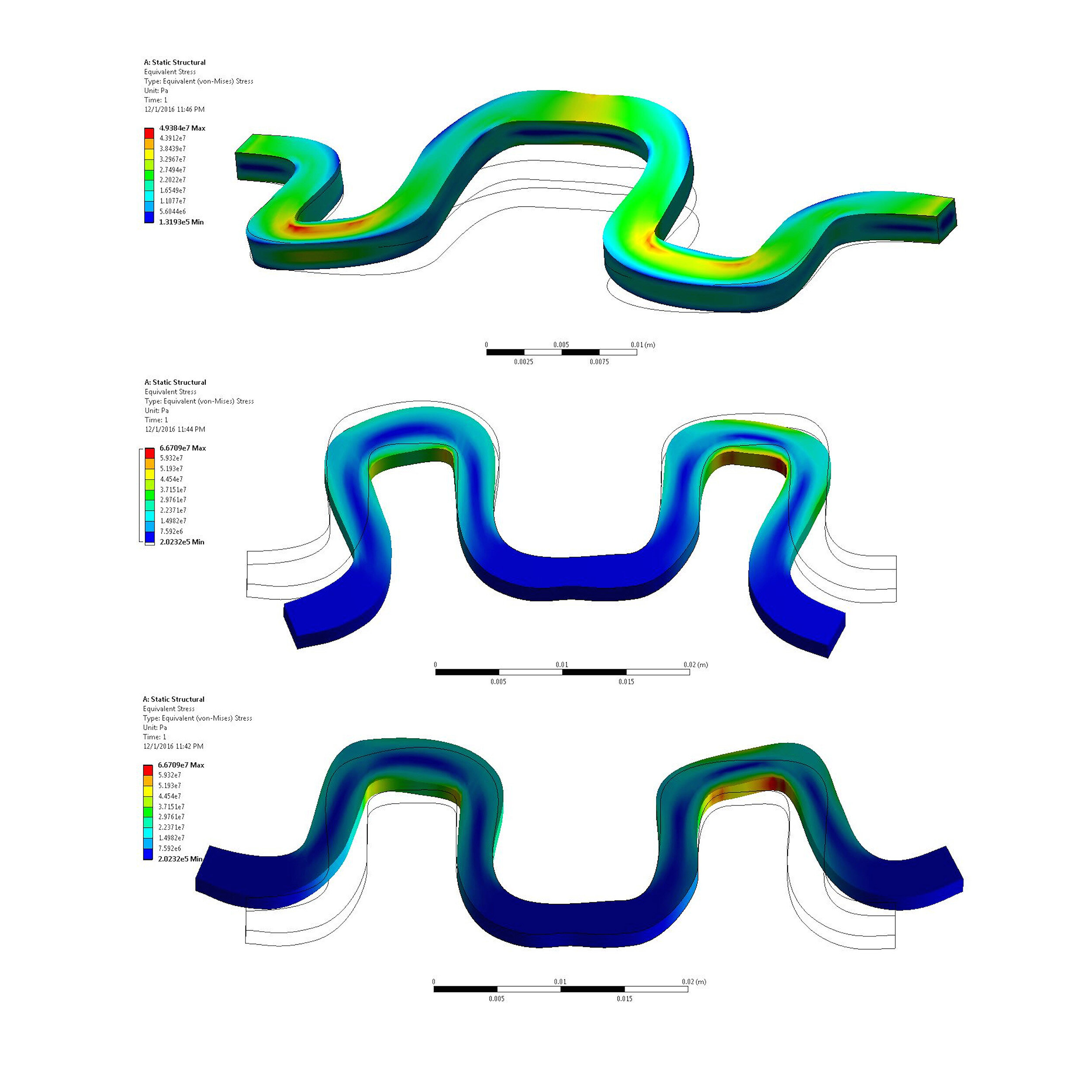
Abstract
This paper explores the possibilities of kirigami geometry— folding with the addition of strategically placed cuts and holes — through simulation and kinetic and adaptive architectural assemblies. Typical kinetic assemblies consist of rigid components connected by mechanical joints that offer limited range of motion and tend to require mechatronic actuation. While mechanical motion is adequate for specific applications, mechanically motile systems lack the adaptive potential, elasticity, and embedded intelligence of adaptive structures. We propose to focus on the design of flexible matrices as a way of moving away from stiff, mechanical unitized systems and toward pliable, continuous 2D and 3D structures that can elastically change geometry in response to external stimuli without the need for external mechatronic energy input. As a proof-of-concept, we have produced an integrated panel-and-hinge assembly in which the panels and hinges are not discrete, mechanically connected components, but are instead functional zones of a continuous matrix. In addition, by controlling aspects of the individual units (panel size, hinge geometry, spacing, unit shape), we can induce larger-scale behavioral changes in the whole matrix.
NSF EFRI ODISSEI: Cutting and Pasting - Kirigami in Architecture, Technology, and Science (KATS)
Kirigami from the Japanese kiru, “to cut,” offers a previously unattainable level of design, dynamics, and deployability to self -folding and -unfolding materials from the molecular to the architectural scale. To achieve this we will cut and join DNA-polymer hybrids to build on the nanoscale and, simultaneously, use three-dimensional printing and modeling to study and prototype geometries on the macroscopic scale. Jenny Sabin and Dan Luo, professor of biological and environmental engineering, are among the lead investigators on a research project to produce “buildable, bendable and biological materials” for a wide range of applications. Sabin and Luo shared a $2 million, four-year NSF grant with University of Pennsylvania researchers Randall Kamien, physics, and Shu Yang, materials science. The project is intended to bring new ideas, motifs, portability and design to the formation of intricate chemical, biological and architectural materials.
